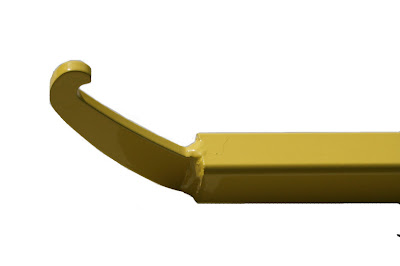HOT SPRINGS -- It was the highest-intensity fire ever recorded in the Black Hills National Forest, but nearly all homes coated with a slimy gel were saved while nearby homes burned to the ground.
John Nash, 63, did not lose his home. But he should have. Seventeen of his neighbors lost theirs in the July wildfire.
Retardant gel, a super-absorbent polymer that encases water droplets for thermal protection of flammable materials, was the difference, he said.
"The house and the flagpole were all that was left," said Nash, no stranger to the firefighting business.
As a volunteer firefighter of many years, he's seen what wildfires can do. The blaze that swept over his gel-protected home was horrible, Nash said.
"This was the nastiest fire I've ever seen. It was lighting up pine cones and the wind was blowing them ahead like tracer bullets," he said.
In all, 33 homes were lost in the Alabaugh Canyon Fire in July.
Protective gel, mixed with water, is relatively new to the firefighting arsenal. Hoses can be used to apply it to homes, and gel also can be dropped from aircraft.
Gel absorbs many times its weight in water and clings well to vertical surfaces. The gel can be quickly applied and protect buildings for at least three or four hours. Once sprayed on homes, the protective powers can be rejuvenated numerous times merely by sprinkling the gel with water.
Those familiar with gel technology are sold on it.
Kim Zagaris, fire chief in the California Office of Emergency Services, said all 122 of the fire trucks under his command carry gel because it can save buildings that otherwise would be destroyed.
"We think it's very good," he said. "It provides us a little more flexibility to make some things happen."
But as effective as gel is, it still is used sporadically in most places, if at all, to prevent homes and other flammable property from being destroyed by wildfires.
In the last decade, thousands of homes -- mostly in Rocky Mountain and western states -- have been destroyed by wildfires. Southern California blazes in the fall of 2003 alone claimed nearly 3,650 homes, killed 22 people and scorched 430 square miles.
A June fire near South Lake Tahoe burned 254 homes. Many of them were ignited by flying embers that rained down ahead of the main fire front.
Protective gel could have saved a lot of those homes, said Ed Waggoner of Reno, Nev., a retired California fire boss who now helps direct attacks on large forest fires in the Black Hills. Gel is the wave of the future but has been slowly embraced by the firefighting community, he said.
"This stuff really works," Waggoner said. "It would have made a substantial difference at Tahoe if gel had been used on those homes. We're talking about a water bubble that you put on your house two or three hours before the fire gets there, and it'll save it when the fire gets there."
Zagaris, the California official, said he was unsure if gel was used to save homes in the Tahoe blaze because it spread so rapidly.
"Most of those homes were lost the first day of the fire, and most of my resources weren't up there. I doubt very seriously you had too many who could use it," he said.
In the Alabaugh Fire just southwest of this Black Hills tourist town, electrician Gorden Sabo, a veteran volunteer firefighter, helped spray 27 homes with gel. He said 25 of them escaped the blaze. One gelled home was destroyed because it was missing a garage door and the flames got inside, and the other home could not be saved because it started burning before it could be completely covered with gel, Sabo said.
Sabo, who has developed a $12,000-$20,000 system that can be attached to fire trucks to mix and quickly apply the gel in advance of approaching flames, has transformed two of his own trucks to do it. A home can be gelled in about 10 minutes, he said.
"The ones we save are usually the worst of the worst," Sabo said. "The houses that the fire departments don't believe they can save are the ones that they call us in to gel first."
Sabo has spent the past two years perfecting his gel system and only recently has begun to sell it to fire departments. He said interest in it has been high.


 Three in One Pro water meter key attachment
Three in One Pro water meter key attachment 3 in 1 Pro water main key "2" Box Shape
3 in 1 Pro water main key "2" Box Shape Open in-ground valve covers with the 3 in 1 Pro valve cover factory laser cut hook
Open in-ground valve covers with the 3 in 1 Pro valve cover factory laser cut hook  Picture of the 3 in 1 Pro curb box forked wheel handle key
Picture of the 3 in 1 Pro curb box forked wheel handle key